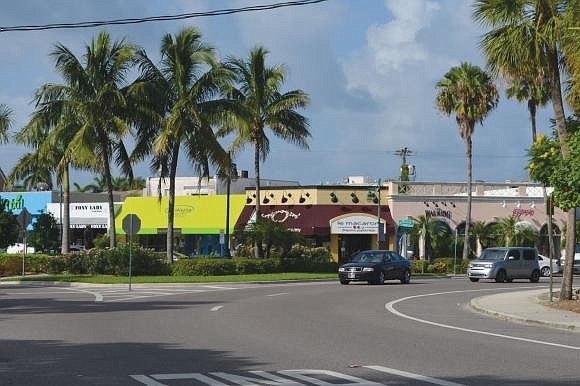- April 15, 2024
-
-
Loading

Loading

At the first of three scheduled presentations today, retail consultant Robert Gibbs said there is unmet demand in the city of Sarasota that will allow for considerable growth over the next five years.
Gibbs was hired by the city in April to study the optimal mix of businesses in four areas: downtown, St. Armands Circle, the Rosemary District and the Martin Luther King Jr. Way corridor. At City Hall this morning, Gibbs presented his findings, as well as recommendations for how the city can improve the caliber of its retail offerings.
Within all four districts, Gibbs found, there was both an immediate and future demand that could support commercial growth. Gibbs said there was a demand for an additional 256,500 square feet of retail space in the study area now, with that number growing to more than 300,000 by 2019.
In order to capitalize on that demand — and compete with the forthcoming Mall at University Town Center — Gibbs said there was room for improvement within each district. In particular, he said, the awnings and signage in all four districts are outdated. He recommended the city update its design standards and create a fund to help storeowners improve the face of their buildings.
“We're concerned your storefronts are still looking like they're from the 20th century,” Gibbs said. “We think it's time for your storefronts to join the 21st century.”
When the Mall at University Town Center opens, Gibbs said there would be short-term effects on business within the city. Still, the potential for growth he measured exists even after taking into consideration the business generated by the mall. One of the biggest impacts caused by the mall, he said, is that it would cause consumers to have a higher standard — which he said ties into the need for updated storefronts.
“People fall in love with the mall, then they get tired of it,” Gibbs said. “You will see an impact, but the demand will still be there for additional retail.”
Before Gibbs was hired, members of the Downtown Improvement District and St. Armands Business Improvement District raised concerns about the growing number of restaurants in those areas. Both groups discussed methods by which they could slow the growth of restaurants, for fear that they would eventually dominate the retail districts.
According to Gibbs, those fears are unfounded — and, in fact, the opposite is true. The number one area of demand for both downtown and St. Armands Circle was restaurants. According to Gibbs, demand exists for an additional 29,800 square feet of restaurants downtown, and an additional 13,900 square feet of restaurants on the Circle.
Mark Kauffman, one of the members of the Downtown Improvement District interested in limiting the number of restaurants, said he didn’t expect Gibbs’ study to show that room for growth. Still, he said, the group would approach the report with an open mind.
“I’m surprised there’s such a demand downtown and in the Circle (for restaurants),” Kauffman said. “But we’ll listen to the consultant and abide by his recommendations.”
In response to a question from an attendee, Gibbs said the city should consider the implementation of parking meters on downtown streets — not to generate revenue, but to encourage turnover in high-demand parking spots. Gibbs said that he observed very few cars leaving their spaces within a two-hour window on Main Street, which meant many customers were unable to find parking at their convenience.
By charging for parking — even if it’s only a quarter or two — Gibbs said the city could redirect those uninterested in paying to the garages and lots while allowing for others to park with ease as necessary.
“We always put parking meters in town centers,” Gibbs said. “That's the only way we know to stop employees from parking in front of their store all day long.”
In the study, Gibbs measured demand by examining the demographics and projected growth of the four districts’ “trade areas” — the places where each district is most likely to draw its customers from. Between a high number of tourists, growing residential areas and demand from office workers, Gibbs said Sarasota is a healthy retail climate.
“We've felt very encouraged with this study,” Gibbs said. “It's been much stronger than we expected.”
Gibbs is scheduled to give two more presentations today. The first will be at St. Armands Key Lutheran Church from 2-2:30 p.m., and the second will be at the evening session of the City Commission meeting beginning at 6 p.m. Gibbs' full report can be found on the city website.
For more information on the retail study, pick up a copy of Thursday’s Sarasota Observer.
Contact David Conway at [email protected].